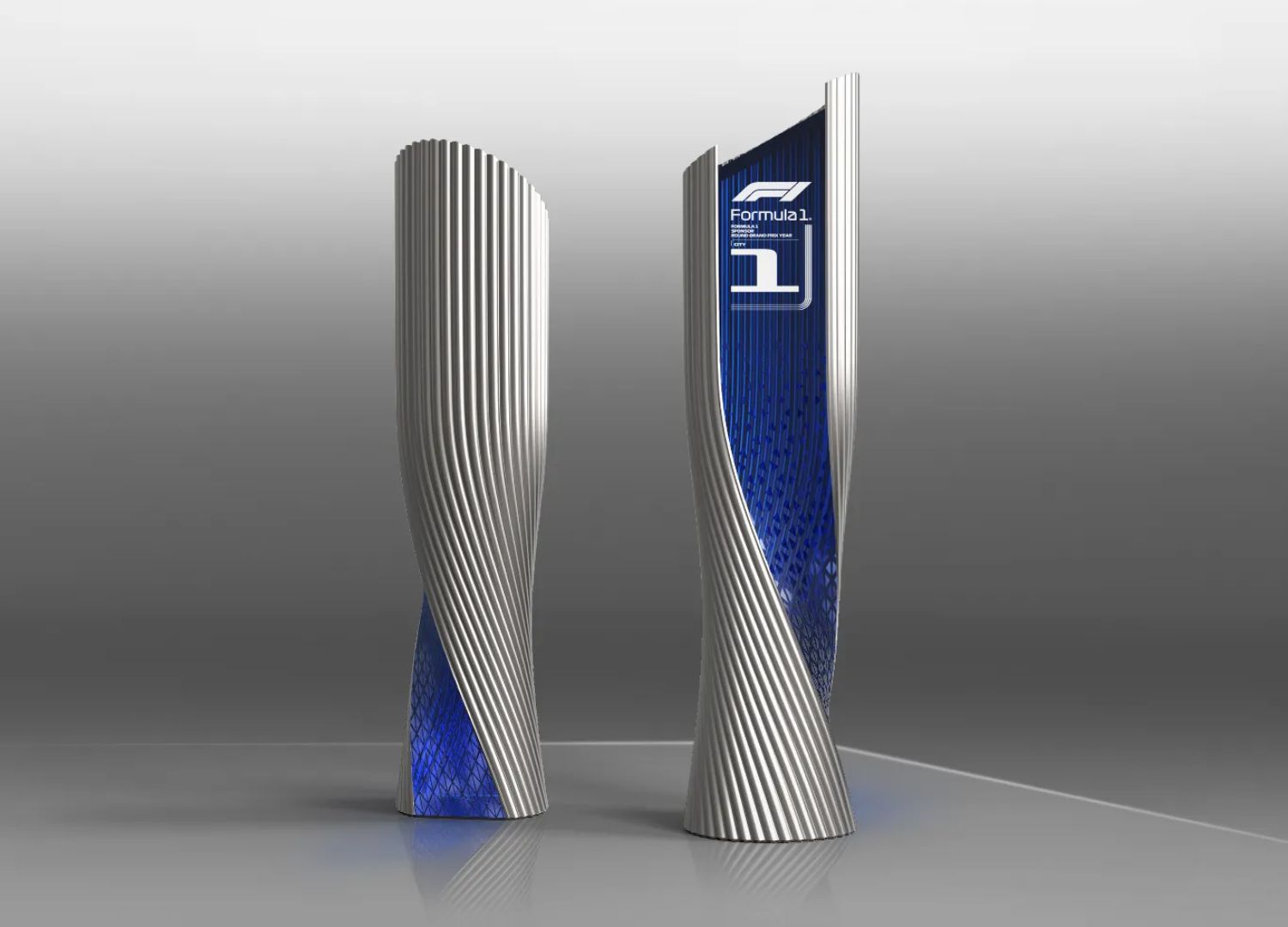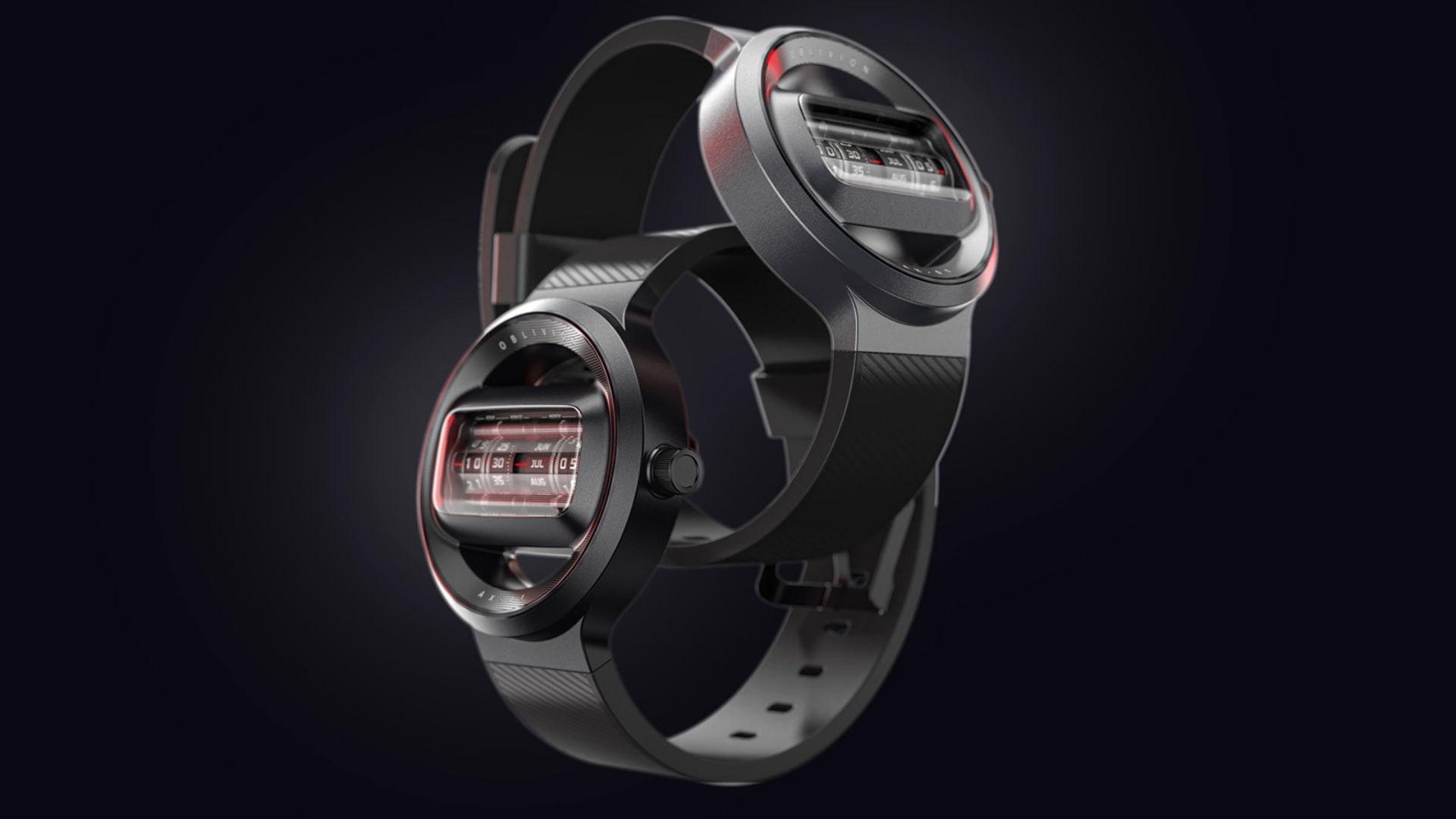And the winner is…Pininfarina’s human-centered approach to trophy design
Since 2006, Italian design studio has lent its unique approach to trophy design, responding to physical gestures and enhancing the sensory experience for winners.

At the heart of Pininfarina‘s illustrious legacy lies a commitment to human-centered design—a philosophy deeply rooted in the belief that innovation and technology should serve to enhance the human experience. For nearly a century, this renowned Italian design firm has been at the forefront of pushing boundaries, with a pedigree steeped in automotive excellence for iconic brands like Ferrari and Maserati.
Not limited to automotive design, Pininfarina has honed an approach to design that seeks to humanize innovation across multiple categories, elevating product design, architecture, mobility, transportation and collectible design to create iconic symbols. This ethos, shaped over the last 90 years, permeates every aspect of their work, from the sleek lines of a sports car to the iconic trophies it has designed for some of the biggest sporting events across the world.

But what does it take to craft a trophy that stands as a singular symbol of triumph? How does one infuse an object with the weight of some of the greatest achievements of someone’s lifetime whilst reflecting the cultural values of the host location? These questions underscore the depth of thought and creativity that goes into each of Pininfarina’s iconic designs, reflecting not only a mastery of craftsmanship but also an understanding of the profound significance these objects hold in the hearts and minds of those who receive them.
Trophy Design by Pininfarina:
Navigating constraints and cultural significance
“When designing a trophy for a specific event in a particular location, it is crucial to understand the main focal points to be reflected in the trophy,” says Nicola Girotti, Head of Design & UX at Pininfarina. “These can include cultural aspects, such as architectural and natural elements, colors, and anything that represents the country where the event takes place.”
Pininfarina’s offices in Italy, China, and the USA are essential for their global projects. With teams in key locations worldwide, they can grasp local insights and cultural nuances. This helps them understand what should be reflected in each trophy, capturing the essence of the event’s location. Plus, it enables smooth collaboration across continents, making the design process more efficient.
“The process involves researching these important elements, gathering information about the country or the type of event, and translating this information into shapes, geometry, details, colors, and materials.”

Pininfarina ventured into trophy design for the first time in 2006 when it crafted the torch for the Turin Winter Olympics, marking the debut of the company’s iconic style in this realm. Exuding a unique blend of elegance and aerodynamic efficiency, the torch exemplified Pininfarina’s mastery of form and function, underscoring the brand’s capacity to extend beyond automotive design and make a meaningful contribution to the global celebration of sportsmanship.
“At Pininfarina, our goal and responsibility is to consistently design eye-catching products,” explains Girotti. “What better object to embody iconic beauty than a trophy?”
This philosophy defines the start of the process for Pininfarina’s trophy design, which involves a creation process that starts with thorough research into the significant elements of the country or event. This research serves as the foundation for translating key aspects into shapes, geometry, details, colors, and materials. The aim is to ensure that each trophy not only holds deep meaning but also captivates visually, aligning with Pininfarina’s commitment to crafting products that are both impactful and visually stunning.

“Of course, there are constraints set by the organization, which vary from event to event,” he adds. “We must adhere to specifications regarding dimensions, weights, and other design criteria.”
How Pininfarina overcomes and embraces these constraints is particularly evident in the design of the Olympic torch. Exemplifying the brand’s blend of functional engineering and elegant design, it expressed the sense of movement and resulted in a memorable symbol for the games. It was engineered to meet rigorous technical requirements: it could not be relit and had to remain lit in rain, snow, and winds up to 120 km/h. It also needed to function in temperatures ranging from -20° C to +25° C and maintain a consistent flame for 15 minutes.
Pininfarina opted for an aluminum exterior, a steel, copper, and technopolymer mechanism, and an embossed finish for better grip. It was fueled by a propylene-butane blend in a standard aluminum canister and an exclusive combustion system ensured the flame’s stability, resistance to extinguishing, and high visibility, producing a yellow-orange flame with non-toxic, odorless smoke.
Notably, a dedicated team of 30 individuals invested 18 months in the design and production of the torch, accumulating over 20,000 hours of labor. It was awarded the “Lorenzo il Magnifico” award, the highest prize from the Florence Biennale of Contemporary Art, in recognition of its innovative design and craftsmanship.

Pininfarina’s work on the torch extended to the dramatic, spiraling cauldron that held the Olympic flame throughout the Games, highlighting its ability to blend advanced technology with traditional craftsmanship. Standing at 57 meters, it was reported at the time to be the tallest cauldron in Olympic history, featuring five tubular support structures rising in a twisted design, representing the Olympic spirit and the tension of athletic competition.
Sustainability in Design and Production
Evident in Pininfarina’s approach to design is its commitment to sustainability, especially when designing objects for global events with initiatives that address pressing global issues. The aluminum exterior of the Turin Olympics Torch was selected for its recyclability and lightweight properties, and the durable design of the torch was a conscious effort to ensure it would be a long-lasting symbol of the event, reducing the need for future reproductions.
This is further showcased through the various methods the brand employs to execute its products, methods typically reserved for their high-performance F1® cars, including advanced techniques such as 3D printing and Selective Laser Sintering (SLS). SLS, for example, employs a high-power laser to draw each layer into a bed of powder, forming solid structures using only the necessary raw materials, a process that results in minimal material waste.

Enhancing the trophy experience: sensory richness and cultural reflections
“Equally as important is considering how the trophy will be experienced by the winners when they hold and celebrate with it. How does it feel in their hands? How is it perceived?,” says Lorenzo Carpignano, Industrial & Experience design consultant at Pininfarina. “The tactile and visual experience should convey a sense of quality and preciousness that a trophy must have.”
As such, particular attention is given to physical gestures as well as iconic symbols that reflect the cultural heritage related to the location of the Grand Prix. In 2023, Pininfarina debuted the world’s first trophy designed to respond to a kiss, inspired by the iconic podium celebration, where drivers passionately embrace the trophy in front of a roaring crowd.
The trophy, which was designed in partnership with Lenovo, mirrored the air intake on F1 cars, highlighting the parametric pattern that echoes the proportions of the logo of Lenovo, an Official Technology Partner of Formula 1. Meanwhile, indicator lights guide the winner to a designated spot, upon kissing the switch, the trophy illuminates in the colors of the winning driver’s national flag, creating a captivating spectacle.

In the same year, Pininfarina partnered with the Lusail International Circuit to create the official trophy for the Qatar Grand Prix, which tried to capture the essence of the newly renovated track whilst also paying tribute to Qatar’s heritage. On the trophy’s surface, the designer team incorporated wave-like patterns that resemble sand dunes and geometric motifs inspired by Al Sadu carpet weaving, a practice rooted in Bedouin cultural heritage.
“For the Lusail trophy, the main focus was representing the country and its traditions,” explains Carpignano, who worked on the official trophy for the Qatar Grand Prix in 2023. “The goal was to create a true icon for the Qatar Grand Prix for 2023 and the following years. With the client’s help, we analyzed the context and observed a beautiful contrast between the wildlands, deserts, and mountains, and the more high-tech cities full of skyscrapers and lights.”
The latest 3D printing technology was used to create the trophy’s metallic skin, which featured a texture reminiscent of wind-swept sand, echoing Qatar’s natural environment. Meanwhile, blue and purple resin flows through this intricate metal pattern, mirroring the way the Lusail circuit weaves through the desert. On the resin surface, a geometric design inspired by Sadu, a traditional Qatari carpet and fabric, adds a cultural touch.

“Hosting an F1 race in the desert is uncommon, and we wanted to convey this unique aspect in the trophy. The result was a slender, upward trophy, resembling the local skyscrapers, with a “rough” metallic skin contrasting with the translucent, shiny, vivid-colored resin core, symbolizing the contrast between heritage and modernity.”
Leveraging expertise and collaboration
Pininfarina’s extensive experience in automotive, transportation, design, and manufacturing equips them with vast knowledge not only in style but also in engineering and production. Over the years, they have amassed internal expertise and forged partnerships with external suppliers, facilitating problem-solving and providing the necessary tools to achieve their objectives.
This well-established supplier network spans various fields, reflecting the diverse applications of automotive technology, specifically the advancements present in modern cars or concept vehicles, ranging from intricate lighting systems to sophisticated interior interfaces and safety mechanisms.

Specifically, during the development of the Lenovo trophies, collaboration with Lenovo plays a crucial role in advancing research and development efforts. Together, the teams meticulously explore optimal methods to bring to life the dynamic interactions between the trophy and its recipient. This comprehensive process involves a thorough examination of innovative technological solutions, meticulously tailored to seamlessly integrate with the trophy’s design and functionality.
Regardless of which event and trophy Pininfarina is working on, the final stages of production are always the same. They entail the expertise of skilled artisans who meticulously handcraft, polish, and refine each component, ensuring the distinctiveness of every trophy, reflective of Pininfarina representing a fusion of artistic flair and technological advancement.

From the illustrious FIFA World Cup Trophy to the intricately engineered Olympic Torch, each creation exemplifies their dedication to creating dynamic, human-centered design, arguably an indispensable aspect when it comes to trophy design. By imbuing these awards with profound symbolism and sensory richness, Pininfarina not only honors achievement but also enriches the essence of sporting victories.
“A trophy’s design is more than just aesthetics; it’s the creation of a symbol of values and a true reward for great achievements. At Pininfarina, our 360° capabilities —mobility, product design, and architecture – emphasize the power of design to generate emotions and celebrate achievements.” says Paolo Trevisan, SVP Design at Pininfarina.















